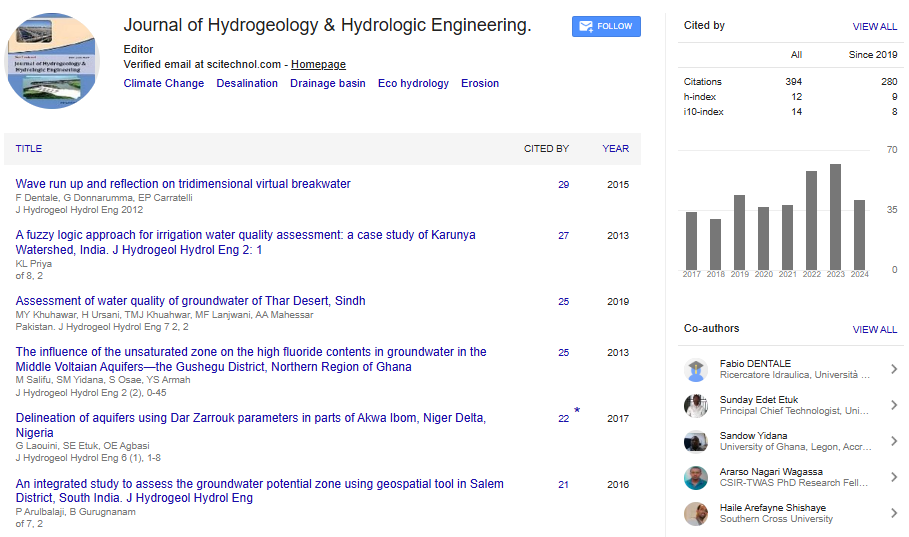Groundwater quality analysis of limestone aquifer of Al-Sulaibiya field, Kuwait
Jasem M Alhumoud
Kuwait University, Kuwait
: J Hydrogeol Hydrol Eng
Abstract
Al-Sulaibiya field is the oldest and the largest groundwater well field producing brackish groundwater from the Dammam Formation aquifer. The production from Al-Sulaibiya field has been decreasing over time, because the field is approaching its life expectancy and the TDS is increased. Therefore, the Ministry of Electricity and Water constructed new water well fields in north Umm-Gudair, Al-Atraf and Kabad as backup. The noticeable low rate of field production in 1991 is mainly due to the second Gulf war. Total dissolved solids (TDS) is a general measure of the total mass of ions dissolved in water and is usually determined from the weight of the dry residue remaining after evaporation of the volatile portion of an aliquot of the sample. TDS has a guidance criterion in groundwater of 500 mg/l. TDS values of the Dammam Formation aquifer of Al-Sulaibiya field are very high. Therefore, the interrelationships between the TDS, electrical conductivity (EC), sodium (Na+), potassium (K+), calcium (Ca2+), magnesium (Mg2+), chloride (Cl-), sulfate (SO4 2-) and bicarbonate (HCO3 -) were examined to trace out the groundwater quality trends of the Dammam Formation aquifer of Al-Sulaibiya field, Kuwait during the period 1991-2005. The variable most strongly correlated with TDS was electrical conductivity (EC).
 Spanish
Spanish  Chinese
Chinese  Russian
Russian  German
German  French
French  Japanese
Japanese  Portuguese
Portuguese  Hindi
Hindi 
